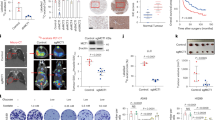Abstract
ZD9331 is a novel, potent thymidylate synthase (TS) inhibitor which does not require polyglutamation by folylpolyglutamate synthetase (FPGS) for its activity. In contrast to Tomudex (ZD1694), ZD9331 may therefore be active against tumours with low FPGS activity. ZD9331 shows anti-tumour activity by both 24-h infusion and bolus administration in the murine thymidine kinase-deficient (TK -/-) lymphoma L5178Y. In view of the history of renal toxicity with some earlier TS inhibitors and the possible therapeutic use of bolus ZD9331, we have examined the effects of bolus ZD9331 dose and route of administration on plasma and kidney pharmacokinetics and renal function in mice. Renal function was assessed by measuring [14C]inulin clearance, and drug concentrations were assayed by reverse-phase high-performance liquid chromatography (HPLC). Renal function was unaffected by ZD9331 up to 150 mg kg(-1) either i.v. or i.p. However, at 200 mg kg(-1), glomerular filtration rate was significantly inhibited following i.v. but not i.p. administration. Pharmacokinetic studies showed that these effects were consistent with the markedly higher plasma drug concentrations occurring during early times following i.v. dosing, although the plasma drug profiles were otherwise similar for both routes. Kidney drug concentrations were slightly elevated in i.v.- versus i.p.-treated animals at the low dose (50 mg kg(-1)), with a correspondingly larger area under the curve. However, at the highest dose (200 mg kg(-1)), peak kidney drug concentrations were 20-fold higher following i.v. administration than after i.p., with marked kidney retention, resulting in a 50-fold greater kidney drug exposure for the i.v. versus the i.p. route. These data show that ZD9331 is non-nephrotoxic at active anti-tumour doses (50 mg kg(-1) i.p.) in mice, and only at very high bolus i.v. doses is there impaired renal function as a result of very high peak plasma concentrations. These adverse effects can be readily overcome by i.p. administration, indicating the likely need for short infusions in clinical settings.
This is a preview of subscription content, access via your institution
Access options
Subscribe to this journal
Receive 24 print issues and online access
$259.00 per year
only $10.79 per issue
Buy this article
- Purchase on Springer Link
- Instant access to full article PDF
Prices may be subject to local taxes which are calculated during checkout
Similar content being viewed by others
Author information
Authors and Affiliations
Rights and permissions
About this article
Cite this article
Walton, M., Mitchell, F., Aherne, G. et al. The renal effects of the water-soluble, non-folylpolyglutamate synthetase-dependent thymidylate synthase inhibitor ZD9331 in mice. Br J Cancer 78, 1457–1463 (1998). https://doi.org/10.1038/bjc.1998.707
Issue Date:
DOI: https://doi.org/10.1038/bjc.1998.707



